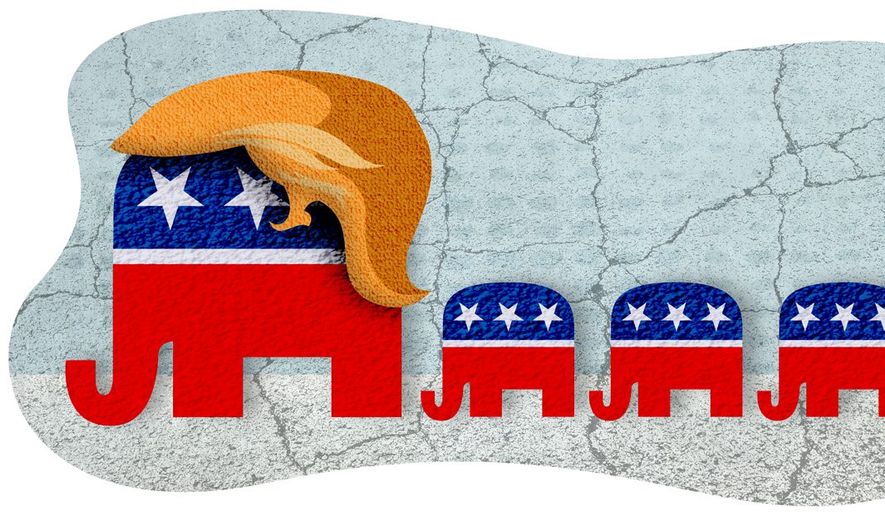OPINION:
The start of a new decade is a time to look both backward and forward, and a time, once again, to consider the question: What is the future of the Republican Party?
It has now been 10 years since the now-extinct Tea Party movement resuscitated the GOP just two years after the winds of change swept Barack Obama into the presidency and Democrats up-and-down the ballot into office.
There is no question the Republican Party has become the party of Mr. Trump in a way that eluded the Tea Party. But what will it be after Mr. Trump leaves office?
Republican National Committee Chairman Reince Priebus presided over a post-mortem following defeat in the 2012 election, but the results were seen by many as an attempt to make the party diet Democratic on illegal immigration and border security — issues that were central in the electoral playbook of Mr. Trump’s 2016 campaign.
Yes, Mr. Trump continues to disrupt the body politic in a way perhaps not seen since Andrew Jackson, but much of his official actions have merely reset the clock by undoing or undermining as much of Mr. Obama’s program as possible. Moreover, these actions, broadly speaking, are in keeping with conservative orthodoxy.
And yet Mr. Trump knowingly or unknowingly adopted some of what Mr. Priebus called for in his post-mortem.
First, he has reached out to minority communities in ways only talked about for years. This is critical, as a shift in the votes of African-Americans of just a couple percent in key battleground states could negate losses suffered in the suburbs. Second, the party’s playbook was rewritten to advance the interests of wage-earning workers in places like Bay City, Michigan, and Youngstown, Ohio. For proof just look at the Chinese tariffs or the NAFTA replacement.
While these changes should be enough for re-election, it is anyone’s guess if the standard-bearer who succeeds Mr. Trump will use the same road map or instead return to the milquetoast Republicanism that dominated until recently.
Obviously, much depends on Mr. Trump getting a second term. But ignoring this, it is hard to see how a return to the cult of Reaganism, which Republicans embraced with the same fervor as the medieval cults of saints in the pre-Reformation church, or the policies pushed by the think tanks of the conservative-industrial complex represent a truly viable future for the GOP in the third decade of the 21st-century.
As we saw with Mr. Trump’s 2016 victories in the Rust Belt and again with the successful courting of the so-called Workington Man by British Prime Minister Boris Johnson during December’s general election, the future of the political right is as a workers’ party.
To further re-election, Mr. Trump would be wise to save Social Security, which this year will expend more money than it collects for the first time since 1982. He could also lift the income tax that earners pay on benefits. If he doesn’t, then smart Republicans looking to succeed him should embrace these ideas.
The same can be said for the student debt crisis, which is an issue that too many ideological voices on the right seem willing to cede to Democrats at a time when millennials are the single-largest voting bloc. Likewise, the role of automation and artificial intelligence in workplaces is a real-world issue that resonates with workers beyond the Rust Belt, as we have seen with the rise of Andrew Yang in the Democratic nomination campaign.
The bottom line: Republicans looking toward the future dismiss Mr. Trump’s resurrection of the party at their own peril. As the forthcoming census will confirm, rapidly changing demographics will only make things more difficult for the GOP with once-solidly red states becoming more competitive.
• Dennis Lennox is a political commentator and public affairs consultant. Follow @dennislennox on Twitter.




Please read our comment policy before commenting.